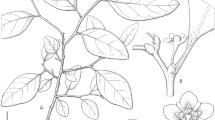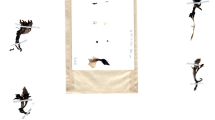Abstract
A systematic study of more than 15,000Myriophyllum specimens from 189 North American herbaria yielded 63M. quitense specimens. Late 19th century collections were made from Henry's Fork of the Snake River in Jefferson County, Idaho, in 1872, from Santa Cruz Creek, Tucson, Pima County, Arizona, in 1881, from Yellowstone Lake in 1885, and from Crook County, Oregon, in 1894. Twentieth century collections have been made from Yellowstone National Park, at several sites along the Snake River in Idaho, in Summit County, Utah, in Lassen and Shasta counties of northern California, at numerous sites along the Deschutes River, and in Benton County, Oregon, and at three sites in Washington. We contend that the species was introduced into North America by migratory waterfowl more than 100 years ago. Only in the Yellowstone Lake and numerous Deschutes River habitats in which populations now exist are environmental conditions conducive to full morphological development of the species in North America.
Similar content being viewed by others
Literature Cited
Aiken, S. G. 1979. North American species ofMyriophyllum (Haloragaceae). Ph.D. thesis. University of Minnesota, St. Paul, MN.
— 1981. A conspectus ofMyriophyllum (Haloragaceae) in North America. Brittonia 33: 57–69.
Balslev, H. 1979. On the distribution ofRostkovia magellanica (Juncaceae), a species newly rediscovered in Ecuador. Brittonia 31: 243–247.
— 1980.Juncus planifolius (Juncaceae) in North America. Brittonia 32: 51–54.
Ceska, O. 1977. Studies in aquatic macrophytes, part XVII. Phytochemical differentiation ofMyriophyllum taxa collected in British Columbia. Water Investigation Branch, Ministry of Environment, Victoria, B.C.
— & A. Ceska. 1986.Myriophyllum (Haloragaceae) in British Columbia: problems with identification. Pages 39–50.In: Lars W. J. Anderson, editor. Proceedings of the First International Symposium on Watermilfoil (Myriophyllum spicatum) and related Haloragaceae species. Aquatic Plant Management Society, Vicksburg, MS.
—,— & P. D. Warrington. 1986.Myriophyllum quitense andMyriophyllum ussuriense (Haloragaceae) in British Columbia, Canada. Brittonia 38: 73–81.
Couch, R. W. & E. N. Nelson. 1986.Myriophyllum spicatum L. distribution in North America. Pages 8–18.In: Lars W. J. Anderson, editor. Proceedings of the First International Symposium on Watermilfoid (Myriophyllum spicatum) and related Haloragaceae species. Aquatic Plant Management Society, Vicksburg, MS.
Fernald, M. L. 1919. Two new myriophyllums and a species new to the United States. Rhodora 21: 120–124.
Orchard, A. E. 1980.Myriophyllum (Haloragaceae) in Australia. I. New Zealand: a revision of the genus and synopsis of the family. Brunonia 2: 247–287.
— 1981. A revision of South AmericanMyriophyllum (Haloragaceae), and its repercussions on some Australian and North American species. Brunonia 4: 27–65.
Welch, B. L. 1978. Distribution of Eurasian Watermilfoil (Myriophyllum spicatum) in the continental United States. B.S. thesis. Oral Roberts University, Tulsa, OK.
Author information
Authors and Affiliations
Rights and permissions
About this article
Cite this article
Couch, R., Nelson, E. Myriophyllum quitense (Haloragaceae) in the United States. Brittonia 40, 85–88 (1988). https://doi.org/10.2307/2806880
Issue Date:
DOI: https://doi.org/10.2307/2806880




